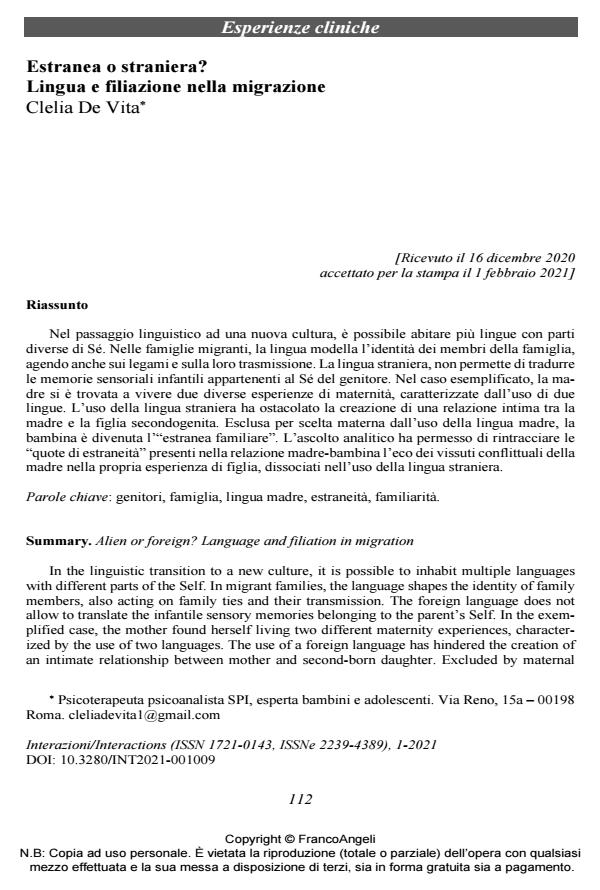Alien or foreign? Language and filiation in migration
Journal title INTERAZIONI
Author/s Clelia De Vita
Publishing Year 2021 Issue 2021/1
Language Italian Pages 13 P. 112-124 File size 168 KB
DOI 10.3280/INT2021-001009
DOI is like a bar code for intellectual property: to have more infomation
click here
Below, you can see the article first page
If you want to buy this article in PDF format, you can do it, following the instructions to buy download credits

FrancoAngeli is member of Publishers International Linking Association, Inc (PILA), a not-for-profit association which run the CrossRef service enabling links to and from online scholarly content.
In the linguistic transition to a new culture, it is possible to inhabit multiple languages with different parts of the Self. In migrant families, the language shapes the identity of family mem-bers, also acting on family ties and their transmission. The foreign language does not allow to translate the infantile sensory memories belonging to the parent’s Self. In the exemplified case, the mother found herself living two different maternity experiences, characterized by the use of two languages. The use of a foreign language has hindered the creation of an intimate relation-ship between mother and second-born daughter. Excluded by maternal choice from the use of her mother tongue, the girl became the "familiar stranger". Analytical listening made it possible to trace the "shares of extraneousness" present in the mother-child relationship, the echo of the mother’s conflicting experiences in her own experience as a daughter, dissociated in the use of a foreign language.
Keywords: Parents, family, mother tongue, strangeness, familiarity.
Clelia De Vita, Estranea o straniera? Lingua e filiazione nella migrazione in "INTERAZIONI" 1/2021, pp 112-124, DOI: 10.3280/INT2021-001009